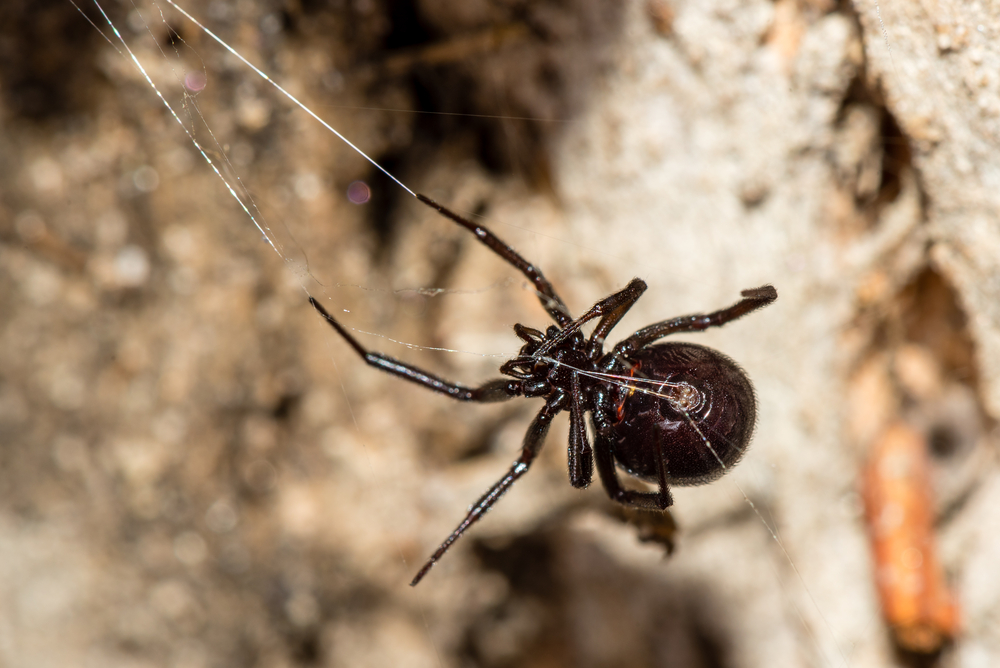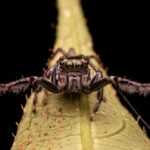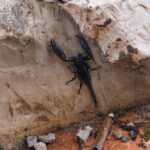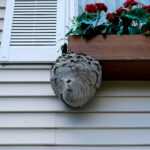A Step-by-Step Guide on How to Identify False Black Widow Spider
Spider Identification
Identifying spiders can be tricky, especially with so many species sharing similar shapes and colors. Among the most commonly confused are the false widow spiders and the infamous black widow spider. The false widow spider, particularly the noble false widow (Steatoda nobilis), is a frequent visitor in homes and gardens, often mistaken for more dangerous relatives due to its dark brown body and rounded shape.
A detailed description of the false black widow spider helps distinguish it from other species by focusing on its size, coloration, and unique markings.
To spot a false widow spider, look for a glossy, dark brown or purplish brown body with distinctive markings on the abdomen. The noble false widow stands out with a unique skull-shaped marking on its back, while other false widow species, like the cupboard spider and rabbit hutch spider, may have subtle differences in their appearance but share the same general body shape and size.
Because many spiders, including the false black widow, can look similar to the black widow spider, careful observation is key. Using a magnifying glass or even a microscope can help you examine the abdomen and markings more closely, making it easier to tell false widows apart from other spiders. This is especially important since the black widow spider, with its venomous bite, poses a greater risk than the harmless false widow species.
By learning to recognize the unique features of false widow spiders, such as their body shape, color, and markings, you can confidently identify these common spiders and avoid unnecessary worry. Whether you’re dealing with a noble false widow, a cupboard spider, or another member of the Steatoda genus, understanding their appearance is the first step in safe and accurate spider identification.
Are False Black Widow Spiders Dangerous?
Although false black widow spiders resemble the notorious true black widows, their venom poses little threat to humans. In this guide, we’ll show you how to recognize false black widow spiders, understand their behavior, and know when medical attention might be necessary after a bite. Distinguishing false black widows from other venomous spiders is crucial to avoid unnecessary panic.
False black widow spiders have much milder venom than true black widows, making their bites far less harmful.
These spiders are not poisonous and usually cause far less discomfort than their infamous cousins. False black widow spiders are not aggressive towards humans and will typically only bite in self-defense.
Look for their glossy brown color and the absence of the red hourglass marking to tell them apart from dangerous species.
To keep false widows out of your home, seal entry points, reduce clutter, and consider professional pest control if needed.
Understanding the False Black Widow Spider
False black widows belong to the same family as true black widows but are harmless to humans. The noble false widow’s bite can cause mild reactions similar to true black widow bites but is far less serious.
These spiders are part of the Theridiidae family, which includes both true black widows (genus Latrodectus) and false widows like Steatoda grossa. Members of this family are known as cobweb weavers, building irregular, tangled webs in hidden corners of buildings. Compared to other members of the Theridiidae family, Steatoda grossa shares similar web-building habits and predatory behavior, but may differ in preferred hiding spots and the appearance of their webs. As cobweb weavers, they use these messy webs to trap prey, displaying effective predatory behavior and preferring secluded spots.
Knowing the differences between false and true widows helps prevent needless alarm and guides when to seek medical help.
Physical Characteristics
False black widows are about the size of a half-dollar coin, making them easy to visualize. They have rounded bodies with bulbous abdomens similar to true widows. Their cephalothorax is reddish-brown, contrasting with a darker abdomen. Legs are slender and sometimes lighter than the body.
Colors range from dark brown to purplish brown, often with pale yellow or grayish markings on the abdomen. Unlike true black widows, false widows lack the red hourglass marking underneath.
Adult female false black widows measure 6 to 10.5 millimeters, while male false black widows reach up to 10 millimeters. Adult females typically have a glossier, darker abdomen with more pronounced markings, whereas males are usually lighter in color and may have less distinct patterns. Their glossy, dark bodies and subtle markings can vary, making identification tricky at times.
Common Species
The main false widow species include Steatoda grossa (cupboard spider), Steatoda nobilis (noble false widow), and Steatoda bipunctata (rabbit hutch spider). The cupboard spider is common in southern and western U.S. homes. Steatoda grossa is also frequently found in coastal states along the Atlantic, Gulf, and Pacific regions. Steatoda species are present in various regions, including the UK and parts of the U.S.
The noble false widow has a brown abdomen with cream-colored skull-like markings and is rising in numbers in the UK, though bites remain rare. Noble false widows are the most prominent false widow species in the UK. The noble false widow is native to the Canary Islands, from where it was likely introduced to other regions.
These species differ from the northern black widow (genus Latrodectus), which is more dangerous with a shiny black body and red markings.
Steatoda species share the family Theridiidae with true widows but are less threatening. Other spiders like house and cellar spiders can look similar, so knowing the differences is helpful.
Identifying Similar Species
Telling false widow spiders apart from other spiders can be tricky, especially since several species share similar shapes and dark brown coloring. The noble false widow (Steatoda nobilis) and the cupboard spider (Steatoda grossa) are two of the most common false widow species found in the UK, and both are often mistaken for the more dangerous black widow spiders. While all these spiders have rounded abdomens and a glossy appearance, there are some key differences to look for.
False widow spiders, including the noble false widow and cupboard spider, have a dark brown or purplish brown body with lighter, sometimes cream-colored markings on the abdomen. The noble false widow is especially recognizable by its large, oval-shaped abdomen and, in many specimens, a distinctive skull-shaped marking. The rabbit hutch spider (Steatoda bipunctata) is another false widow species that is slightly smaller and has a more rounded abdomen, but it shares the same general body shape and dark coloring.
Key Differences from Black Widows
One of the most important features to check is the underside of the abdomen. False widow spiders do not have the bright red or orange hourglass marking that is the hallmark of black widow spiders (genus Latrodectus). Black widow spiders, such as the northern black widow, have a shiny jet-black body and a clear hourglass shape on the underside, making them easy to distinguish if you can get a good look.
Other Confused Spiders
Other spiders, like the missing sector orb-weaver, can also be confused with false widows. However, the missing sector orb-weaver usually has a pale yellow or white marking on its abdomen and is often found in webs across windows or corners indoors, rather than in the tangled, ground-level webs of false widows.
When identifying a false widow spider, pay attention to its body length (up to 14mm for adult females), the shape and size of the abdomen, and any unique markings. False widows are about the size of a fifty pence piece when you include their leg span. Their markings can vary, but the absence of a red hourglass is a reliable sign you’re not dealing with a true black widow.
It’s important to remember that false widow spiders are harmless to humans, and their bites are rare and usually no worse than a wasp sting. In contrast, black widow spider bites can cause more severe symptoms and require medical attention.
By learning to spot the differences in body shape, markings, and size, you can confidently identify false widow spiders and avoid unnecessary worry. Understanding these subtle distinctions helps you appreciate the diversity of spiders in your home and garden, and ensures you can respond calmly if you encounter one.
Habitat and Behavior
False widows live year-round in human structures like homes, sheds, attics, and garages. They prefer dark, quiet spots such as cellars and undisturbed areas. If you find a false widow in your garden or storage shed, it can be safely relocated outside instead of being harmed.
They’re mostly nocturnal and shy, avoiding humans unless provoked.
Their adaptability lets them thrive worldwide in cities and residential areas.
Understanding their habitats and behavior helps avoid unwanted encounters and manage infestations effectively.
Preferred Environments
False widows are masters of stealth, preferring quiet, undisturbed corners around buildings where they can spin their webs in peace. You’ll often find them nestled in low vegetation, tucked under bark, squeezed between rocks, or hiding beneath bridges. Their adaptability is impressive—they thrive across diverse regions including the UK, West Indies, Central America, and Australia. These spiders have made human environments their cozy homes, yet they rarely cause trouble. If you spot an unwanted spider indoors, consider gently relocating it outside instead of harming it—these little arachnids play a valuable role in controlling insect populations.
Web Structure
The webs of false widows are a tangled masterpiece of irregular, sticky silk threads, often woven close to the ground around rocks or logs and hidden away in dark, quiet corners. Unlike the neat, symmetrical orb webs you might imagine, these messy cobwebs are perfectly designed for trapping unsuspecting prey. Spotting these webs can be your first clue to the presence of false widows nearby, helping you manage their population if needed. Their web-building behavior reflects their patient hunting style, waiting quietly for insects to stumble into their sticky traps.
Feeding Habits
False widows are opportunistic predators with a taste for small insects such as fruit flies and isopods. They use venom to quickly subdue their prey, then wrap it meticulously in silk before dining. This efficient hunting technique allows them to thrive in varied environments. A well-fed false widow sports a plump abdomen, signaling a successful feast. Their diet not only keeps them healthy but also helps control pesky insect populations around your home, making them silent but effective pest controllers.
Life Cycle
You might notice false widows more often between July and November, but these spiders are active year-round in buildings. Their life begins as tiny spiderlings hatching from eggs, undergoing several molts as they grow into adults. Males usually live shorter lives, often dying shortly after mating, while females can persist longer, producing multiple egg sacs each season. Understanding their life cycle can help you predict when you might encounter them and manage their presence responsibly.
Mating and Reproduction
In spring, male false widows embark on a cautious courtship dance to win over females without becoming a meal themselves—a delicate balance of risk and reward. Females then produce three or more egg sacs between May and July, each packed with over 200 eggs. This prolific reproduction ensures their populations remain steady. Knowing their breeding habits can inform effective control measures if you wish to limit their numbers around your home.
Development Stages
From tiny hatchlings to mature adults, false widows undergo several molts, shedding their exoskeletons as they grow. Females are prolific, producing multiple egg sacs per season, while males live about 18 months primarily focused on reproduction. This development journey equips them to survive in various environments and maintain their presence in human habitats.
Medical Significance of Bites
While false widow bites are rare, they can happen—usually when the spider feels threatened. The venom is mild compared to true black widows, causing symptoms like localized pain, blistering, nausea, headache, and lethargy that typically last from 1 to 60 hours. Severe reactions, including necrosis, are extremely uncommon. Recognizing these symptoms helps you decide when to seek medical care, ensuring peace of mind if you ever experience a bite.
Symptoms of a Bite
If bitten, you might experience pain similar to a wasp sting, along with possible blistering and general malaise. Some people report nausea, headache, and lethargy, but these symptoms are usually mild and short-lived. If symptoms worsen or persist, seeking medical attention is advisable to prevent complications.
Treatment Options
Most false widow bites can be treated at home with simple care: clean the bite area thoroughly, apply ice packs to reduce swelling, and use antihistamines if mild allergic reactions occur. If signs of infection develop, antibiotics may be necessary. In rare severe cases, professional medical treatment is required. Prompt care ensures a quick recovery without lasting effects.
Preventing and Managing Infestations
To keep false widows at bay, seal entry points like windows, doors, and vents to block their access. Decluttering reduces their hiding spots, while regular vacuuming and cleaning remove webs and egg sacs. When you find a spider indoors, consider humane relocation outdoors. For severe infestations, professional pest control offers effective, long-term solutions. Integrated pest management strategies help maintain a spider-free home while respecting their ecological role.
False black widow spiders are fascinating creatures that contribute to controlling pest insects around us. Despite their intimidating appearance, their bites are typically mild and pose little risk to humans. By understanding their habits, habitats, and behavior, you can coexist peacefully with these beneficial spiders. Prevention through home maintenance and, when necessary, professional help ensures you enjoy a safe and comfortable living environment without unnecessary fear.
Frequently Asked Questions
Why are they called false black widows?
Because they look similar to true black widows (genus Latrodectus) but have milder venom and lack the distinctive red hourglass.
Are false black widow spiders poisonous?
They have venom, but bites are usually mild and comparable to wasp stings, not medically serious.
How can I identify a false black widow spider?
Look for a glossy dark brown or purplish brown spider about 6–10.5 mm long with pale yellow or grayish markings and no red hourglass under the abdomen.
What symptoms occur after a false widow bite?
Pain, blistering, malaise, nausea, headache, and lethargy lasting from 1 to 60 hours, typically mild.
Where do false widow spiders live?
They prefer dark, undisturbed places like sheds, garages, under bridges, and quiet corners in homes.
By learning about false black widow spiders, you can appreciate their role in nature and reduce fear and misunderstanding. Remember, these spiders are more friend than foe!




